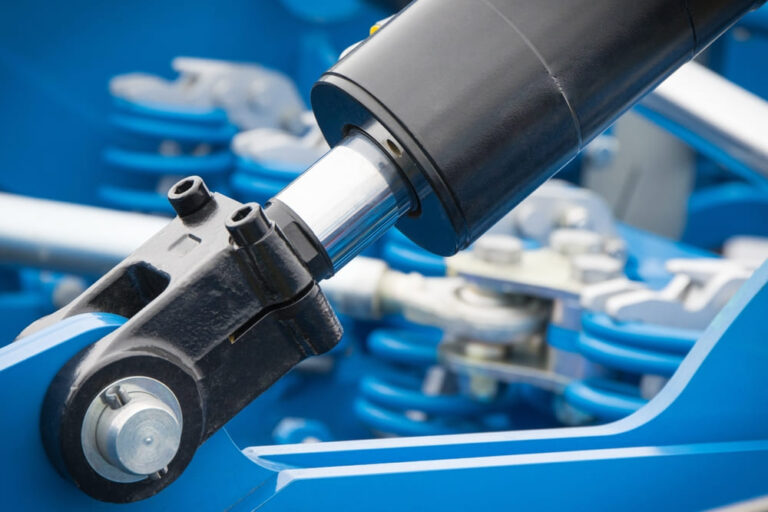Introduction About Actuator
- Latest news

Actuator is an extremely critical component in contemporary technology.
It plays the role of converting input energy into actual movement or force.
These actuator devices are widely used in all walks of life, so this article will comprehensively introduce the definition, types, working principles and applications of actuators in different industries, so that you can quickly understand the contribution and value of actuators to modern technology through the article.
●What is an actuator?
1. Introduction to actuators: definition and overview
An actuator is a device that converts input energy into output motion.
These devices can be mechanical, electric, hydraulic, pneumatic or magnetic, and vary according to their working principles and application scenarios.
In modern technology, these devices are widely used in various automation systems and robotics.
The application scope of actuators covers many fields such as industrial automation, smart home, medical equipment, automotive systems, etc., and has a profound impact on modern life and production methods.
2. Common types of actuators: electric, hydraulic, pneumatic
Some common types of actuators are listed below based on their different operating modes:
- Electric Actuators: Electric actuators use electrical energy to drive motion and typically include an electric motor or other form of electric device. Such actuators are commonly found in many applications, such as mechanical equipment, industrial automation systems, home electronic devices, etc. Electric actuators generally offer more precise motion control and efficient energy conversion.
- Hydraulic Actuators: Hydraulic actuators use compressed fluid (usually oil) to create motion. By controlling the flow and pressure of fluid, hydraulic actuators can provide high force output and smooth movement. This makes them very useful in applications that need to withstand high forces or perform heavy work, such as: construction machinery, automotive systems, etc.
- Pneumatic Actuators: Pneumatic actuators use compressed gas (usually air) to create motion. These actuators are similar to hydraulic actuators, but are generally faster and less expensive. Pneumatic actuators are commonly found in many industrial applications, such as air compressors, pneumatic tools, and automated production equipment.
Each type of actuator has its unique advantages and applicable scenarios, so you can choose a suitable actuator as a solution according to different needs.
●Working Principle of Actuator
1. Energy conversion process
The energy conversion process of an actuator is at the heart of its operation.
Depending on the type, actuators use different mechanisms to convert input energy into output motion or force.
For example, mechanical actuators may use gears, screws, or other mechanical connections; electric actuators use electrical energy to drive motion; hydraulic actuators use the pressure of compressed fluids; and pneumatic actuators use the force of compressed gases to achieve motion.
2. Control and regulation
The movement of the actuator can usually be controlled and adjusted through “control systems” and “sensors”.
The control system can adjust the actuator’s movement speed, force and position as required, thereby achieving precise motion control.
Sensors can detect external environments and conditions and provide feedback signals, enabling the system to respond to changes in a timely manner and maintain movement stability and accuracy.
The control and adjustment capabilities enable actuators to achieve flexible and precise motion control in a variety of applications, and also allow actuators to better meet operational needs and purposes.
3. Improve the working efficiency of equipment system
The application of actuators can greatly improve the working efficiency of equipment systems.
Through automation and precise motion control, actuators enable equipment to complete tasks faster and more accurately.
This not only improves production efficiency and quality, but also reduces labor costs if the actuator is properly applied, while also improving the safety and reliability of the system.
The use of actuators not only improves the working environment, but also brings higher competitive advantages to enterprises.
●Actuator Application Industry & Development Trends
1. Industrial Automation
Actuators are widely used in factories and production lines to drive various equipment and robotic systems, thereby achieving production automation and efficient operation of production lines.
These industrial actuator applications can improve production efficiency, reduce costs, and enhance product quality, while also improving working conditions and safety, and making factories more intelligent and efficient.
2. Agricultural Robotization
Agriculture is an emerging application area that will grow rapidly after 2020 for actuators.
In this industry, actuators can be used in various agricultural equipment and robotic systems, such as automated harvesting robots, robotic arms and grippers, automated irrigation systems, etc.
These applications can not only improve agricultural production efficiency and quality, but also reduce dependence on manpower, thereby reducing agricultural production costs while alleviating farmers’ labor intensity.
3. Biomedical Industry
With the popularization and intelligentization of medical care, actuators have been gradually introduced into various medical devices and robotic systems, such as micro-medical precision equipment, rehabilitation equipment, adjustable medical beds and chairs, etc.
These applications can improve the efficiency and quality of medical services and improve the quality of life of patients.
They can also reduce the workload of medical staff and increase the feasibility and popularity of medical services.
In conclusion
As one of the important system components of modern technology, actuators have broad applications and development prospects in various industrial fields.
Through the definition, types, principles and industrial applications of actuators in this article, I believe you have understood the importance and value of this technology, and also understand that this technology will be an important trend in future development.
JetHarness is a customized manufacturer focusing on automotive, medical, automation, audio and video equipment.
It can also provide high-quality precision actuator product services to help your company move towards more intelligent system automation!
New Visitor
Manufacturing Production
Safety Instructions
About Us
Terms of Service
© 2022 Jet Harness
Design by NSS Group